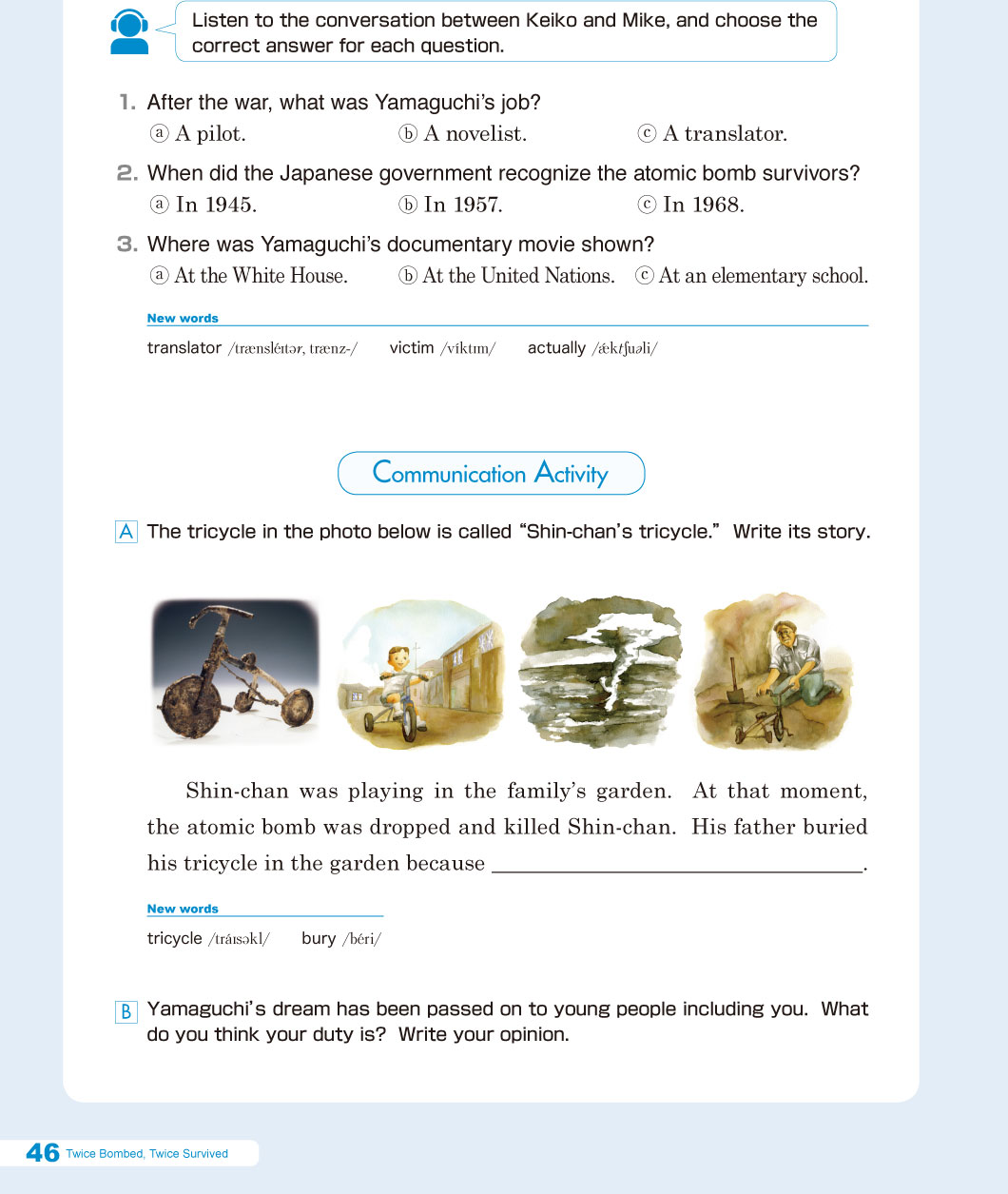









| 1. | c |
|---|---|
| 2. | b |
| 3. | b |
| Keiko: | I read something about Yamaguchi-san’s later life. |
| Mike: | Really? What was it? |
| Keiko: | Well, after the war, Yamaguchi-san worked as a translator for the US and then became a teacher. |
| Mike: | Was he recognized as a bomb victim then? |
| Keiko: | Not really. The Japanese government recognized the atomic bomb survivors as hibakusha only in 1957. |
| Mike: | Oh, so he started to talk a lot about his terrible experience then. |
| Keiko: | Actually, he tried to put the experiences behind him at first and didn’t talk about them much. But in his eighties, he wrote a book about his experiences. He also appeared in a 2006 documentary movie about the 165 double atomic bomb survivors. |
| Mike: | How interesting. What was the title? |
| Keiko: | It was called Twice Survived: The Doubly Atomic Bombed of Hiroshima and Nagasaki. It was shown at the United Nations. He also made a speech there. He told the world to stop using atomic weapons completely. |















